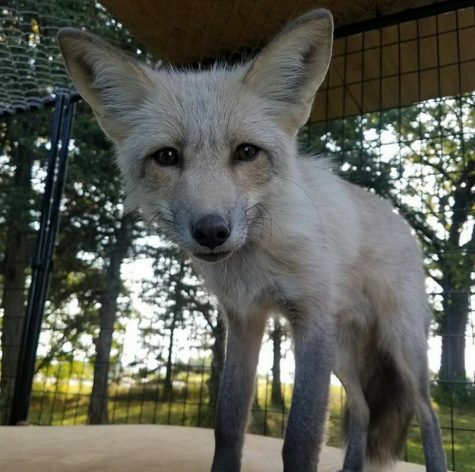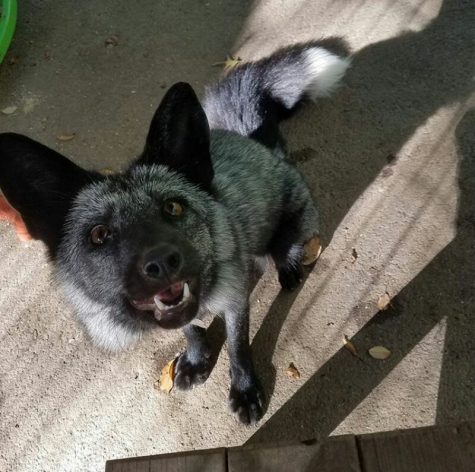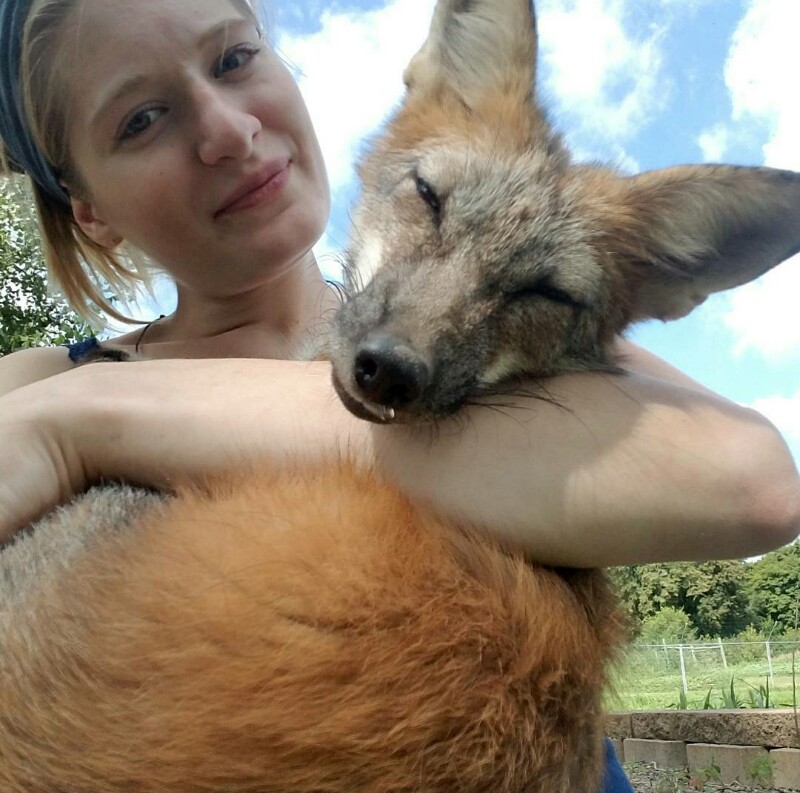Meet Mikayla Raines: Fox Rescuer
Mikayla Raines and one of her old now-adopted foxes, Thystle (All photos from Mikayla Raine’s Instagram- @mikdolittles_animals)
September 26, 2017

On Friday, I had the pleasure of meeting Mikayla Raines, the founder of Save a Fox Rescue and interviewing her. Raines takes in foxes from fur farms until they can be adopted by people who give the foxes a better life than to just be slaughtered for their fur. It would be illegal for Raines to release these foxes in the wild since they were born in captivity and considered agricultural animals and are also unable to learn how to fend for themselves.
In her sanctuary in Lakeville, she was allowed three foxes, but she kept five. As a result, the city prohibited her Save a Fox Rescue center. But Raines didn’t stop and moved with her foxes to Faribault, where it remains today.
When did you first learn about fur farms? What was your reaction to them? “I feel like a lot of people always know about fur farms, but it takes something huge for them to really realize what it is or what it means. Discovering fur farms and how bad it really is? I’d say that was two years ago.”
What initially drove you to get a fox and where did you get it from? “My first fox experience was an accident. It was just a wild orphan that was found that I helped bottle raise. That’s when I fell in love with foxes. And then I later got a fox as a pet and then after that I started learning about fur farms and that I could actually rescue them.”
Did you ever try to do anything else to save foxes from fur farms than just try to rescue them? “There isn’t really more you can do other than spreading the word not to buy fur and wear fur because closing down fur farms in the United States actually would not help the fur industry and it would just make it increase in other places like China and Russia. And it’s more regulated here in the United States so we can actually rescue the foxes from the fur farms. If I were to take action to get all fur farms closed down in the United States I wouldn’t be able to rescue any and the fur industry would just move elsewhere. So it doesn’t help to close down fur farms or to release foxes from fur farms it only helps when you educate people not to wear fur.”
How many foxes do you think you rescue a year? “This year we rescued a little over twenty.”
How many are you allowed to have at a time? “I’m allowed fifteen adults and twenty babies.”
Can you describe your foxes’ enclosures? “We have something always on the top to prevent climbing over. We always have something on the bottom to prevent digging out.”
Do you rescue any other animals than foxes? “Yes. We rescue mink from fur farms and we take in other exotic animals that people had bought from exotic breeders and then surrendered. So we take in sugar gliders and chinchillas and many different reptiles.”
How do you get the foxes from the fur farms? “They give us ones that are sick, injured, ill and rejected [from their mothers as pups].”
How many foxes do you have currently? “Thirteen.”
Do you consider yourself to be your foxes owner? “I consider my foxes my family more than anything.”
What different types of foxes do you have? “Actually we only have red fox species right now but we have rescued arctic foxes too, they just all got adopted.”
What do you feed your foxes? “They have a grain-free kibble and they also get other substitutes in their food. They’re omnivores so they get fruits and vegetables and we mix it up. Every fox is different so it depends what they like and don’t like, some of them like apples, some of them don’t, but they all get raw meat too. It’s very essential in their diet because they need that protein.”
Do you find that foxes act more like cats or dogs? “Really either. It’s kind of like asking someone who has a dog if their dog acts more like a cat or a bird. They’re going to say: ‘well, it acts more like a dog.’ and that’s kind of the same with foxes. Foxes act more like foxes. But if I had to try to compare them, I would say a combination of a cat, dog and a ferret.”
Do you train your foxes? “I could train them way more than I do. I train them as far as potty-training them and train them all to sit but I don’t go really any further than that just because we have a lot of rescues.”
What’s your craziest fox story? “We’ve had a lot of handicapped foxes, so we had one this year that was missing a leg, missing some toes and missing an eye.”
What advice do you have for people who may be interested in doing what you do in the future? “Definitely get some experience volunteering with foxes first before you decide that’s what you want to do.”
If someone ever wants to donate or get in contact with you, where would they go? “They could go to https://www.saveafox.org/, that’s the website and there’s contact information on there,”
Mikayla Raines has rescued 48 foxes and given 36 of them homes with the help of over 10,000 online donations, many volunteers and sponsor for her animals and is still saving foxes to this day. Check out her website and Instagram to find out more and see pictures and information about her rescued animals!













